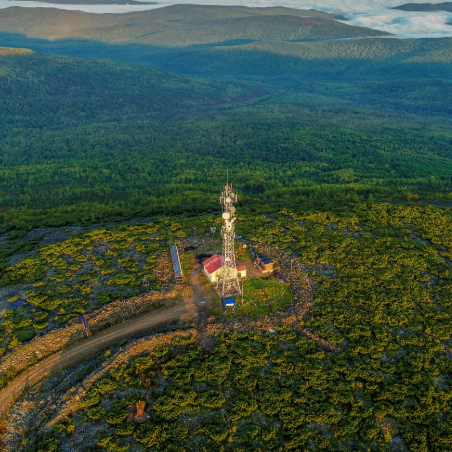



China is arguably making the world's biggest push to reduce the digital divide between rural and urban residents, with mobile carriers and telecom tower builders pouring tons of resources into ensuring that more people can access fast, affordable mobile communication and broadband network services.
The move is part of broader efforts launched by the Ministry of Industry and Information Technology and the Ministry of Finance, to promote inclusive telecom services. Starting from the end of 2015, the central government, local governments and telecom carriers have earmarked billions of dollars to overcome geographical barriers to expand network construction and let more people benefit from the upgraded internet services.
One of the focuses is to expand the telecom signal coverage in Daxing'anling Mountains in Inner Mongolia autonomous region. Daxing'anling Mountains is a famous mountain range in the northeast of China, and it sits at the highest latitude in China and is known as "nature's treasure trove."
Last year, the Ministry of Industry and Information Technology approved the plan to build 121 4G telecom base stations in Daxing'anling Mountains, and most of the construction work has already been done.
After the project is completed, the public network coverage rate of forest farms, scenic spots, fire watch towers, important roads, and key fire danger areas in Daxing'anling Mountains can be increased to about 50 percent, up from less than 10 percent.
E Liye, a forest investigator for Daxing'anling Mountains, is one of local people who have benefited from the expanded telecom services. From April to November every year, E and his colleagues go deep into the mountains to carry out field surveys. However, this year is a little different. The data collected by the team members in the forest can be transmitted to technicians in real time through the 4G network for analysis. In the past, they had to ride motorcycles to bring the data to the technicians.
The Ministry of Industry and Information Technology said more efforts will be made to increase support for key rural counties, border areas, and key forest and grassland fire prevention areas, and support broadband network coverage in villages, forest farms, pastures, and along major transportation routes. At the same time, the support for the construction of 5G networks in rural areas will also be increased year by year.

If you have any problems with this article, please contact us at app@chinadaily.com.cn and we'll immediately get back to you.